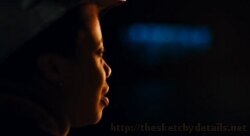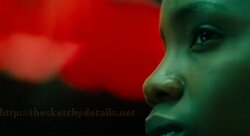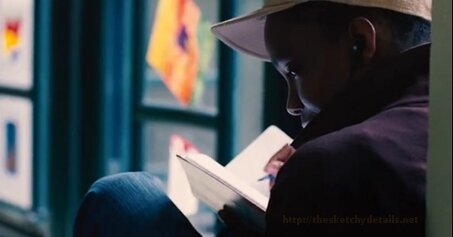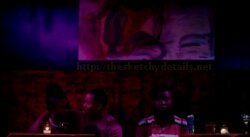Hit Me With Your Best Shot is a series of posts over at The Film Experience. Nathaniel programs a series of films to watch each week and choose your favorite still from. This week centers on Pariah and should really bring about a lot of discussion.
Back when I made my Top 10 Films of 2011 list, I specifically mentioned that I had to exclude Pariah because I hadn’t seen it. Now I have and I can gladly report that it would easily have made the list. Top half, even. I’m enamored of it.

Pariah is all about the use of color to define storytelling.
Pariah is the story of Alike (uh-lee-kay), or Lee as she likes to be called. Lee is a straight-A high school student, a talented writer, and a lesbian coming to terms with her sexuality.
Dee Rees fills the screen with color anytime Lee is able to explore her true identity. She uses leading lady Adepero Oduye’s skin as a canvas and all the gels and filters as paint. Rees paints her red, gold, purple, blue, orange, and green every chance she gets. It’s just the perfect device to get into the psyche of a teenage poet coming to terms with her own existence.

Dee Rees' use of color could leave any Argento fan breathless.
But perhaps the most arresting use of color happens early on in the film. Lee’s mother tries to force her to act and dress more like a young woman. In response, Lee packs her school bag with baggy clothes and baseball caps every day, waits for the bell to ring, then changes into her own style. A popular girl takes notice of her hiding in the hallway and drops the hint that she might be into Lee.

"I like girls, but I love boys."
Lee is cast in a light blue hue against the shadow. The color is mirrored in the metal framing around the windows. More significant is the invasion of bright colors during the day for the first time in Pariah.
Lee is not out at the beginning of the film. Not really. She has a friend, Laura, who encourages her to go to clubs and pick up girls, but otherwise she’s just a tomboy figure in the community. It takes another girl at school appreciating her for her true self to unleash multiple colors during the day. Lee is cast in blue, but the windows are filled with the rest of the film’s color palette–red, orange, yellow, blue, purple, and green.

Lee is overwhelmed by possibility at the club.
The result is a film that reflects the character of Lee perfectly. It’s beautiful inside and out and does not need to conform to anyone’s expectations to succeed.
Thoughts? Love to hear them.
